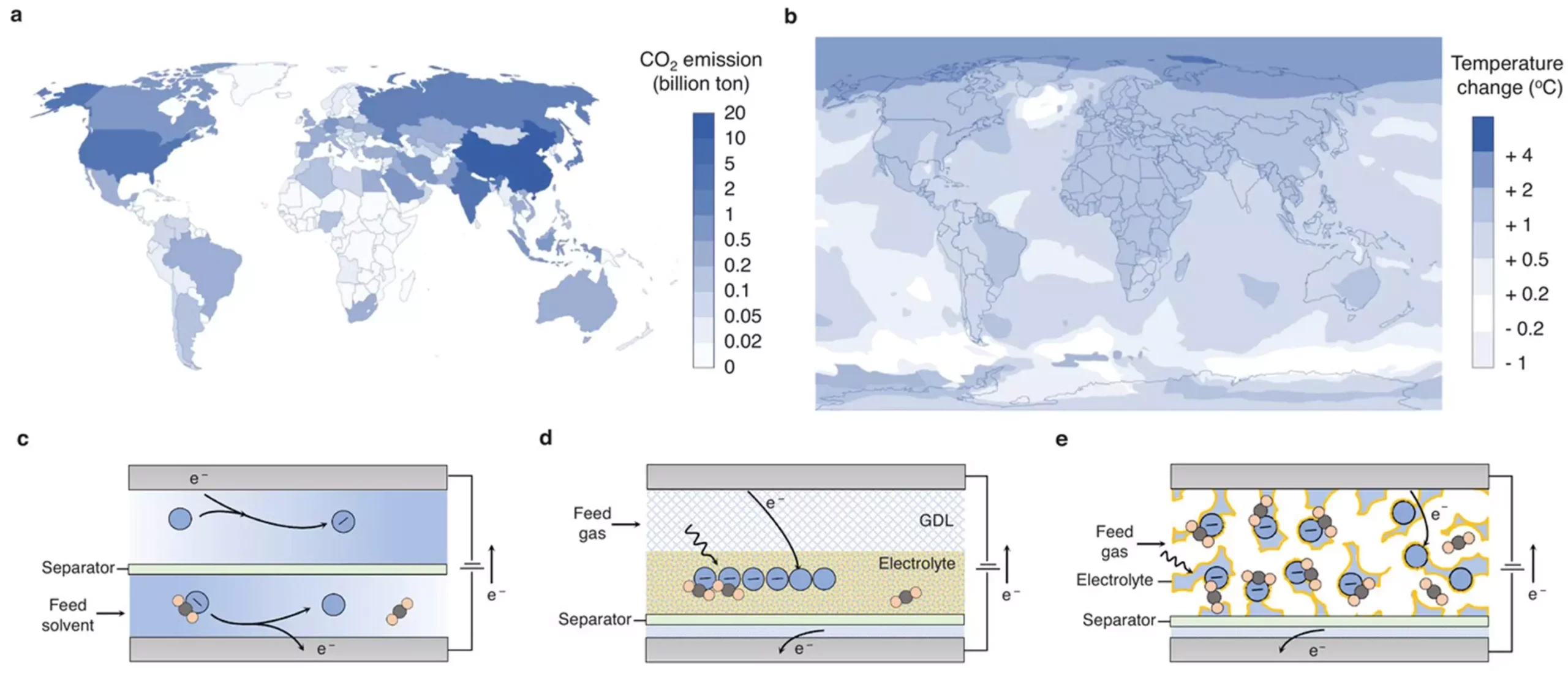As the world grapples with the pressing challenge of climate change, research advancements in carbon dioxide (CO2) capture are becoming increasingly vital. A pioneering study published in Advanced Materials showcases a transformative material designed to optimize CO2 removal from low-concentration sources: porous polymeric electrodes (PPEs). Spearheaded by Professor T. Alan Hatton and his research team, this innovative approach employs a combination of readily available materials, resulting in an efficient mechanism for gas capture that could significantly influence industrial and environmental practices.
At the heart of this groundbreaking research lies a unique composition that includes melamine foam, polyvinyl alcohol, carbon nanotubes, and quinone molecules. This specific blend creates a robust and porous architecture that maximizes surface area while facilitating gas transport processes. The unique structural properties of PPEs enable improved interaction between CO2 molecules and the capture material, leading to enhanced removal efficiency. The design eliminates the requirement for separate gas diffusion layers, resulting in a more compact system that could reduce costs and streamline production.
In practical applications, the porous polymeric electrodes demonstrate impressive performance metrics. Achieving a CO2 capture capacity ranging from 30 to 80 kilograms per cubic meter per day, the PPEs excel in comparison to traditional carbon capture systems. The innovation marks a significant leap, showcasing up to a 90% utilization rate of the active capture material—an outcome that dramatically outpaces previous carbon-based electrode designs. Furthermore, these electrodes maintained their effectiveness over 100 cycles of capture and release, solidifying their potential for real-world applications under various environmental conditions such as humidity.
The implications of this research go beyond mere technical achievements. As the Intergovernmental Panel on Climate Change (IPCC) emphasizes the urgency of carbon management, advancements like PPEs could be instrumental in accelerating our transition toward net-zero emissions. From direct air capture initiatives to industrial emissions reduction strategies, the versatility of these electrodes opens new avenues in carbon capture. Despite the promising outcomes, the team acknowledges the necessity for further refinement and optimization of these electrodes to ensure efficiency across different environmental scenarios and operational frameworks.
The development of porous polymeric electrodes signifies a pivotal advancement in the realm of carbon capture technologies. With ongoing efforts to enhance scalability and operational versatility, this innovation promises to be a key player in addressing the global climate crisis. As governments and industries continue to explore effective solutions for mitigating greenhouse gas emissions, the emergence of compelling materials like PPEs could be transformative. The research community is poised to leverage this breakthrough to accelerate creative solutions, potentially reshaping the landscape of CO2 management and promoting a more sustainable future for generations to come.


Leave a Reply